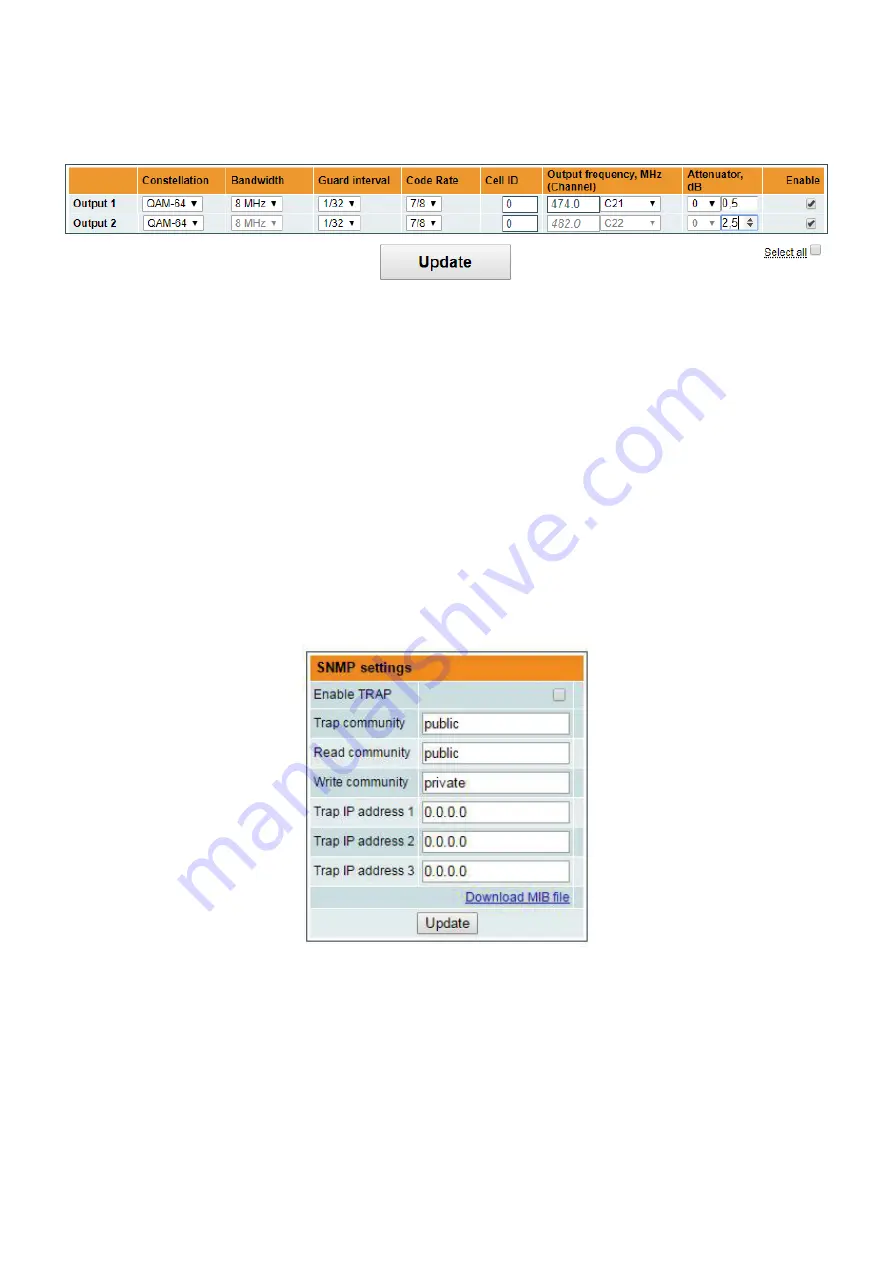
13
6.6. RF outputs
Two adjacent OFDM (DVB-T output) channels can be configured in this section. There is requirement for channels to be
adjacent and sorted by frequency, see the Figure 27 "RF output settings (DVB-T output)". Each channel can have its own
constellation QPSK/QAM16/ QAM64 (DVB-T output), Code Rate (FEC) - there are five valid coding rates: 1/2, 2/3, 3/4, 5/6,
and 7/8. Guard interval of OFDM signal, available selections:1/32, 1/16, 1/8, 1/4. The bandwidth of DVB-T transponder can
be selected from values 8 MHz and 7 MHz. Cell-ID information is optional.
Figure 27. RF output settings (DVB-T output)
"Output frequency“ parameter can be entered manually or selected as a channel from combobox. Channels that can be
selected from the list depend on which region is selected, see the
6.11.10 "Regions"
. If you need any other frequency –
select “Manual” and type the needed frequency. Frequency step is 0.1 MHz. „Enable“ checkbox will enable channel to the
output. Global attenuator can be entered up to 15 dB. Also there is individual precise attenuator up to 2.5 dB in step of 0.5 dB.
Press „Update“ to change settings. In case, if any modulation parameter was changed, both channels will be restarted
with new settings. Exception is „Attenuator“, changes in this parameter will not restart the modulator.
6.7. SNMP settings
Figure 28 "SNMP settings" table is located in “IP parameters” tab.
The description of the SNMP configuration parameters:
"Read Community" - community name acts as a password that is shared by multiple SNMP agents and one or more SNMP
managers. "Read Community" password is used for read-only access to the modules parameters.
"Write Community" - is the password used for read-write access to the modules parameters.
"Enable TRAP" - SNMP traps are alerts generated by agents on a managed device. Check this box to enable TRAP
generation. The module generates traps when the diagnostic message occurs.
"TRAP Community" - is the password used for accessing of TRAPS.
"Host IP #1","Host IP #2""Host IP #3" - IP addresses of hosts with SNMP managers, where TRAPS will be send.
Figure 28. "SNMP settings" table














































